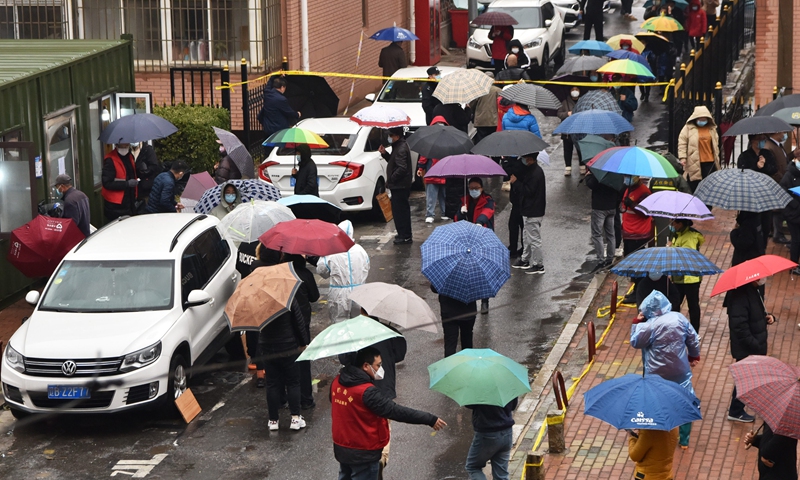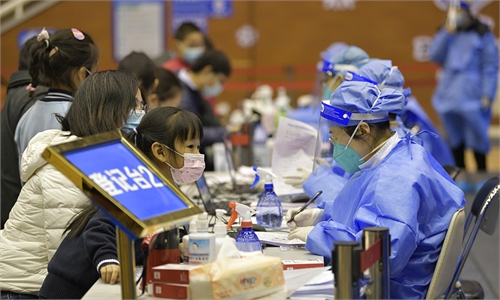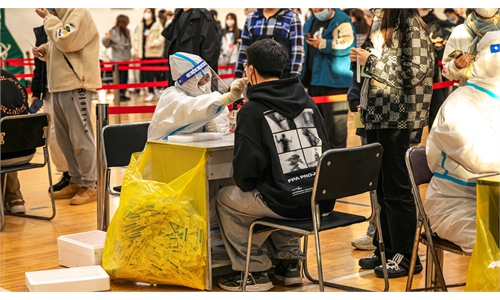Transmission chains of COVID-19 in NE China’s Dalian blocked as latest flare-up wraps up across the nation

Residents in Dalian, Northeast China's Liaoning Province took fifth round city-wide nucleic acid testing on Tuesday. Photo: VCG
The latest COVID-19 flare-up caused by the Delta variant in Dalian, Northeast China's Liaoning Province has been contained with transmission chains in communities in the city basically blocked, the city's health authority announced on Tuesday.
As of Monday, a total of 339 infections tested positive for COVID-19 including 301 confirmed cases and 38 silent carriers with most infections in Zhuanghe, Dalian. The transmission chain is relatively clear, according to Zhao Zuowei, head of the city's health commission.
There have been no new cases found at the society level since November 19, apart from those close contacts of confirmed cases who have been placed in centralized medical observation sites, which meant community transmission has been basically blocked.
According to Zhao, the reason for the soaring number of patients in the city to more than 300 was that the outbreak occurred through a cluster of infections at companies, families and schools, which formed as much as four transmission chains that further spread through several secondary transmission chains. These transmission chains finally formed epidemic clusters in relevant areas.
It took an average of two days to finish intergeneration transmission with the quickest passed onto the seventh generation.
Besides, the super-spreaders also led to a rapid increase in the number of cases. At least three patients each led to more than 30 direct follow-up cases. A patient surnamed Shao caused 81 cases at the university town.
The characteristics of this round of flare-up presented characteristics of high viral load, rapid spread and high infectivity, with most patients showing no typical symptoms.
Before the infections were confirmed, their nucleic acid tests showed both negative and positive results repeatedly and the test results of parallel labs were inconsistent. Since the outbreak of the epidemic, 145 people had been tested at least five times before they were finally confirmed as infected, 42.77 percent of the total number of infections. One patient tested negative 16 times during quarantine before they returned a positive result.
There were no typical symptoms in the early stage, also a characteristic of the flare-up. Only five cases developed fevers in the early stage, and more than 50 percent of the infections remained asymptomatic throughout treatment.
These characteristics led to the rapid spread of the epidemic, with more than 100 cases in a short time and more than 300 cases in 10 days.
Apart from Dalian where the transmission chains are blocked, both Southwest China's Sichuan Province and Northeast China's Heilongjiang Province also declared that their entire areas lowered to low-risk on Tuesday, which indicates that the latest resurgence of COVID-19 has come to an end across the nation.
China's National Health Commission announced on Saturday that the latest resurgence of COVID-19 was close to ending as eight provinces hit by the latest flare-up had reported zero new cases for 14 consecutive days, and the increase in domestically transmitted cases had been limited to single-digits for four consecutive days as of Saturday.
Global Times



